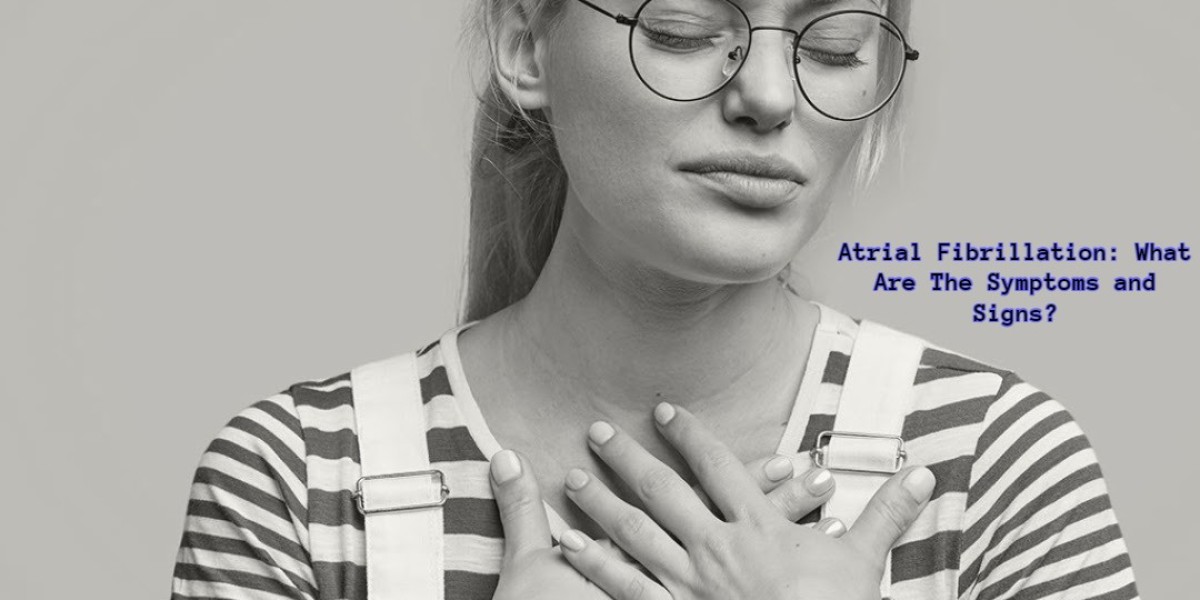Atrial fibrillation (AF) is the most common type of heart arrhythmia, affecting over 3 million people in the United States. This irregular and often rapid heart rate originates in the atria or upper chambers of the heart. When the atria quiver rather than contracting fully, the heart’s electrical signals become chaotic and ineffective at pumping blood properly. Though not always symptomatic, many people with atrial fibrillation experience palpitations, chest pain, dizziness, shortness of breath, fatigue, and other debilitating symptoms.
If left untreated, AF also significantly increases one’s stroke risk. This overview covers the most common symptoms and observable signs of AF so that readers may gain awareness of this dangerous arrhythmia. Detecting the hallmark manifestations of an irregular pulse, palpitations, lightheadedness, and shortness of breath can motivate earlier screening and treatment.
Here is an overview of the key symptoms and signs of atrial fibrillation:
- Irregular, Racing Heartbeat:- Those with atrial fibrillation often describe their heartbeat as “fluttering” or pounding. The heart rate is abnormal and rapid, sometimes over 100 beats per minute when at rest.
- Palpitations:- Many people with AF experience uncomfortable awareness of their irregular heartbeat, like the feeling that their heart is “skipping beats.” This sensation is due to the erratic electrical signals.
- Dizziness and Lightheadedness:- The inconsistently rapid heart rate can lead to reduced blood flow to the brain, causing momentary dizziness or nearly fainting.
- Shortness of breath and chest pain – Rapid, ineffective pumping during AF can cause lung congestion and chest discomfort. Shortness of breath is a common symptom.
- Fatigue and Weakness:- Due to impaired blood flow, those with uncontrolled AF often feel tired, weak, and unable to exercise.
- Risk of Blood Clots:- Those with AF have a significantly higher risk of stroke-causing blood clots, since the atria does not fully empty when beating irregularly.
Monitoring for these signs of arrhythmia and seeking medical treatment if they occur regularly can help manage atrial fibrillation and prevent associated complications.
Here are some additional key points about atrial fibrillation that may be useful to expand upon:
- Causes:- AF can be caused by other heart conditions like high blood pressure, coronary artery disease, valvular heart disease, cardiomyopathy, congenital heart defects, hyperthyroidism, and obesity. Lung diseases, sleep apnea, excessive alcohol, stimulants, stress, and advancing age can also contribute.
- Types:- Paroxysmal AF causes sporadic episodes that stop on their own within 7 days. Persistent AF is more continuous. Permanent/long-standing AF persists for over a year and is unlikely to revert to normal rhythm.
- Diagnosis:– AF is diagnosed through physical exams, ECG, Holter monitoring tests, echocardiograms, stress tests, and cardiac CT/MRI scans. These allow doctors to check heart rate and rhythm over time.
- Treatments:- Options include medications to control heart rate, blood thinners, cardioversion procedures to shock the heart back into rhythm, catheter ablation to scar heart tissue causing erratic signals, antiarrhythmic meds, and pacemakers as last resort.
- Lifestyle Changes:- Quitting smoking, limiting alcohol, staying hydrated, controlling blood pressure, losing weight, reducing stimulants, managing stress, and getting adequate sleep all help manage atrial fibrillation.
- Complications:- AF significantly increases the risk of stroke, heart failure, dementia, and other heart-related complications if not properly addressed. But the prognosis can be good with proper treatment.
CONCLUSION:-
Being aware of the common signs of AF like palpitations, dizziness, shortness of breath, fatigue, and an irregular heartbeat can help motivate people to seek medical evaluation and obtain a prompt diagnosis. While some cases of atrial fibrillation are asymptomatic, recognizing the hallmark symptoms of chest pain, fluttering pulses, lightheaded spells, and reduced exercise capacity should prompt further screening for this dangerous arrhythmia. Addressing AF through medications, medical procedures, or lifestyle changes is key for regulating heart rhythm and lowering one’s risk of blood clots and stroke. Knowledge of the typical manifestations of atrial fibrillation empowers the public to take action when this heart condition is suspected. Being proactive and getting evaluated at the first signs of AF is crucial for safeguarding cardiovascular health.






